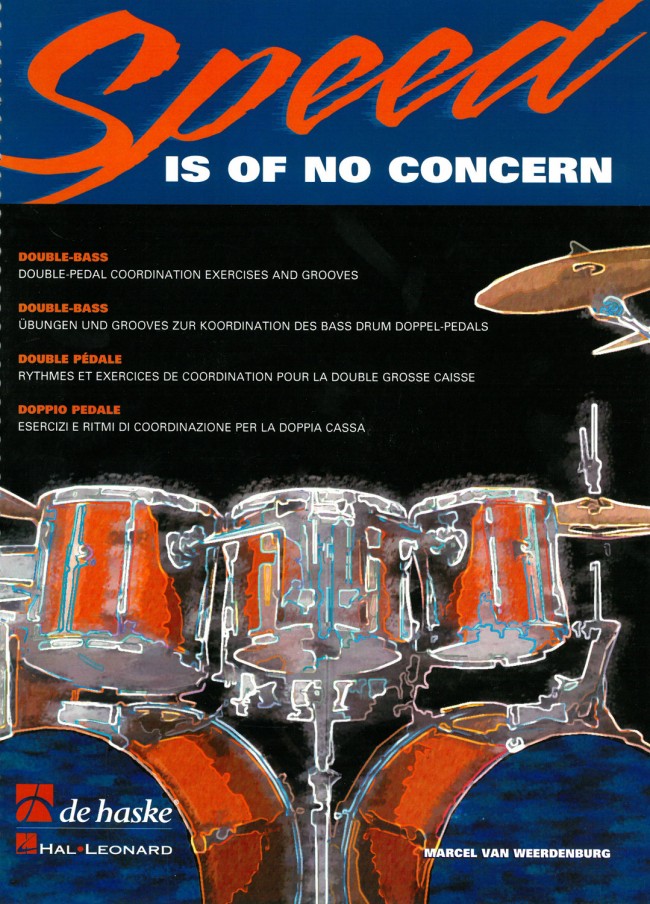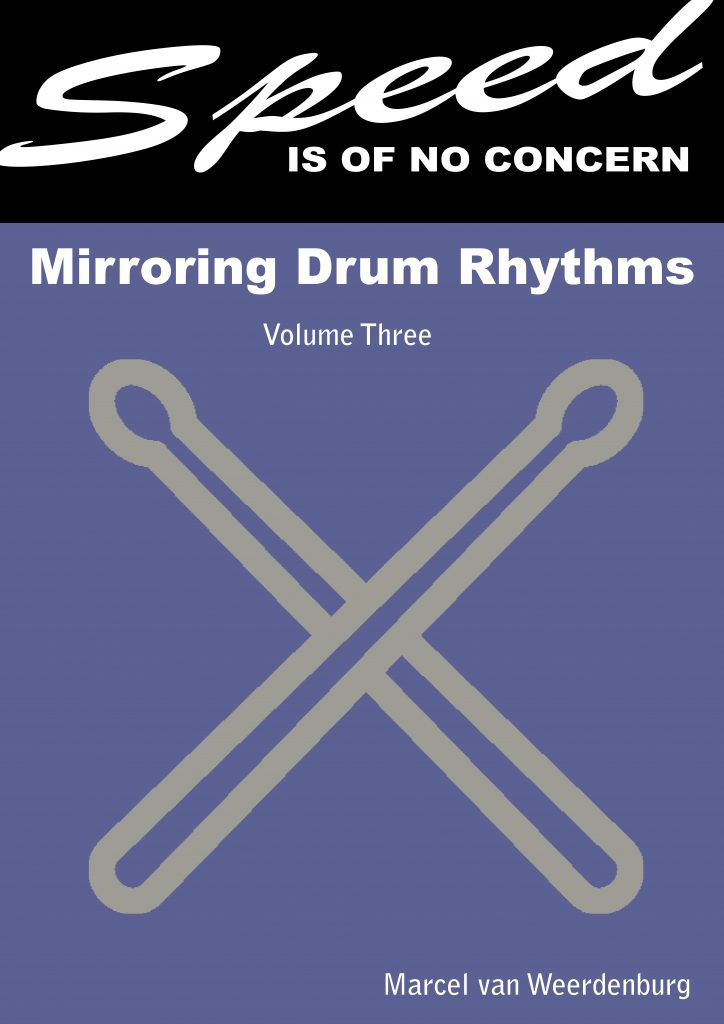Book Speed Is Of No Concern
Speed is of No Concern
In the English, German, French and Italian language!
The use of two bass drums can be applied in practically every style of music. Thanks to the invention of the double pedal, with which you can play a single bass drum with two beaters, increasingly more drummers are becoming enthusiastic about the musical possibilities of this technique.
It is of interest to both advanced and beginning drummers to perfect these possibilities and play drum rhythms with both feet.
The book Speed is of No Concern is suitable for both right-handed and left-handed drummers.
The notation of the grooves is fairly simple, as long as you know which of your feet is stronger (lead foot) and which is weaker (second foot). A right-handed drummer has a stronger right foot, a left-hander has more control over the left foot.
It is essential to give special attention to your weaker foot!
The emphasis in this book is on playing mixed patterns rather than continious bass drum figures.
This means the rhythmic figures are divided among the different elements of the drumset.
The exercises are intended to develop a greater and more effortless independence between the different limbs.
The basic principle of the exercises in this book is: what you play with your hands, you should also be able to play
with your feet!
This automatically means that the order for the hands is also the order for the feet.
The alternating motion of the single-stroke roll —R L R L— etc. is the foundation of this.
A good balance between the various elements of the drumsetis very important.
Try to play the snare drum, hi-hat and ride cymbals as convincingly as the bass drum.
Practice the grooves in a slow tempo to start, then gradually increase the speed.
Do not move too quickly from one exercise to the next.
You will find that it takes some time before a groove begins to sound good.
Always remember:
SPEED IS OF NO CONCERN!
Break a leg!!
Marcel van Weerdenburg
Book Contents
The book is divided in four chapters.
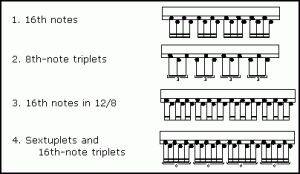
Notation:
Throughout the book we use the following notation:
The foundation of a basic pattern is the single-stroke roll —R L R L— etc. used by practically every double-bass drummer.
- Tip: First, play the bass-drum pattern with your hands, then imitate it with your feet, using the same hand/foot order.
- The examples assume a right-handed hand and foot order. Left drummers change this by simply reversing the hand and foot order.
- I have only used sixteenth note patterns in the introduction.

Each chapter is sub-divided in different patterns:
A. Basic patterns
Basic patterns are rhythmic figures.

B. Mixed patterns
Combining basic patterns creates a mix of interesting rhythms and grooves.

C. Crash accents
The hand movements for crash accents are the same as the foot movements
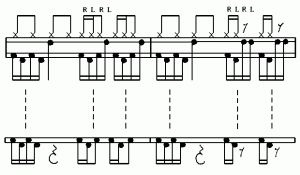
D. Bass-drum fundamentals:
Bass-drum fundamentals are fixed patterns played with the feet.
There are endless ways to combine bass drum and snare drum. The snare fill can be placed at various spots and over various bars.
Again, the hand movements are the same as the foot movements.
In this first example two bars are played, the fill coming in the second bar.
This can be shown in a diagram:
![]()

Each block is one bar, with the blackened block representing the snare fill.
In the second example four bars are played, with the fill in the fourth bar.
![]()
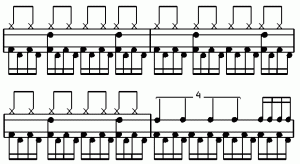
Order: Speed Is Of No Concern
You can order Speed Is Of No Concern at several Internet bookstores or get it at your local music store
